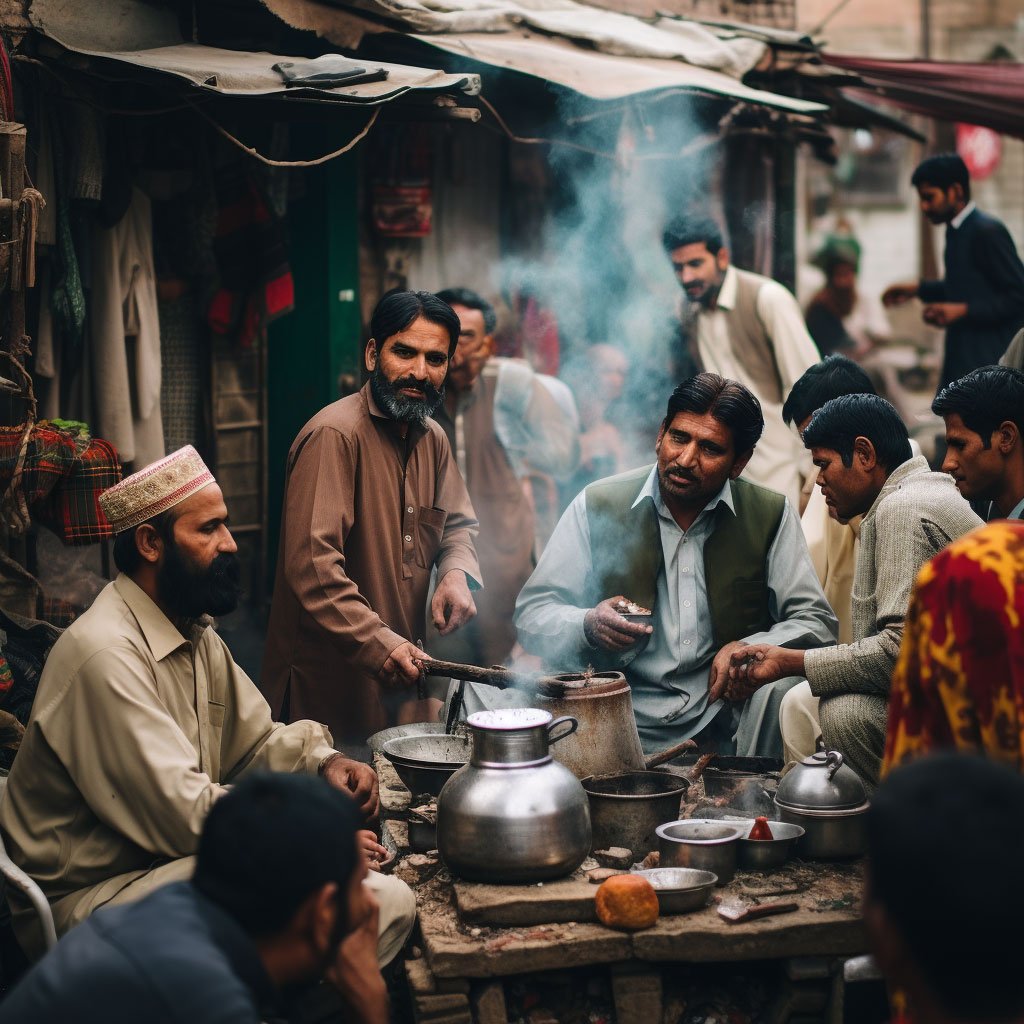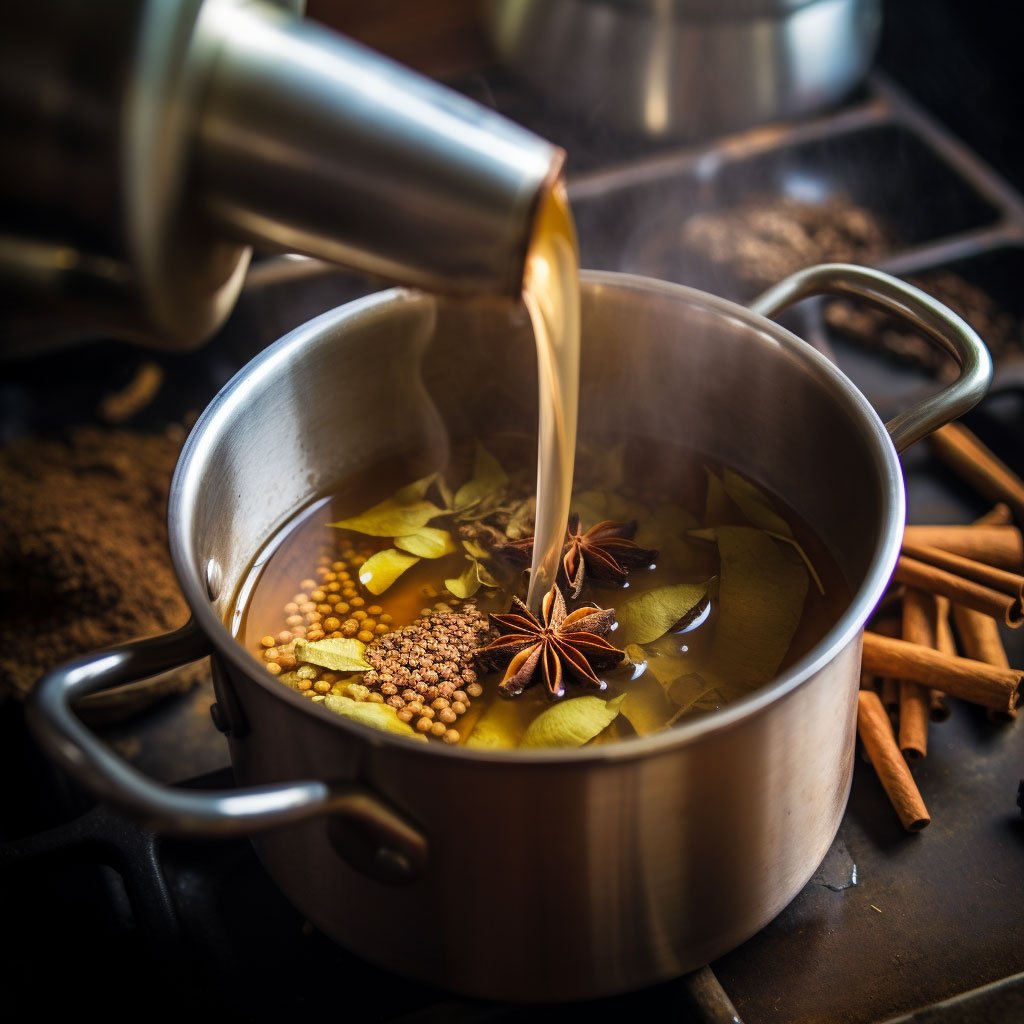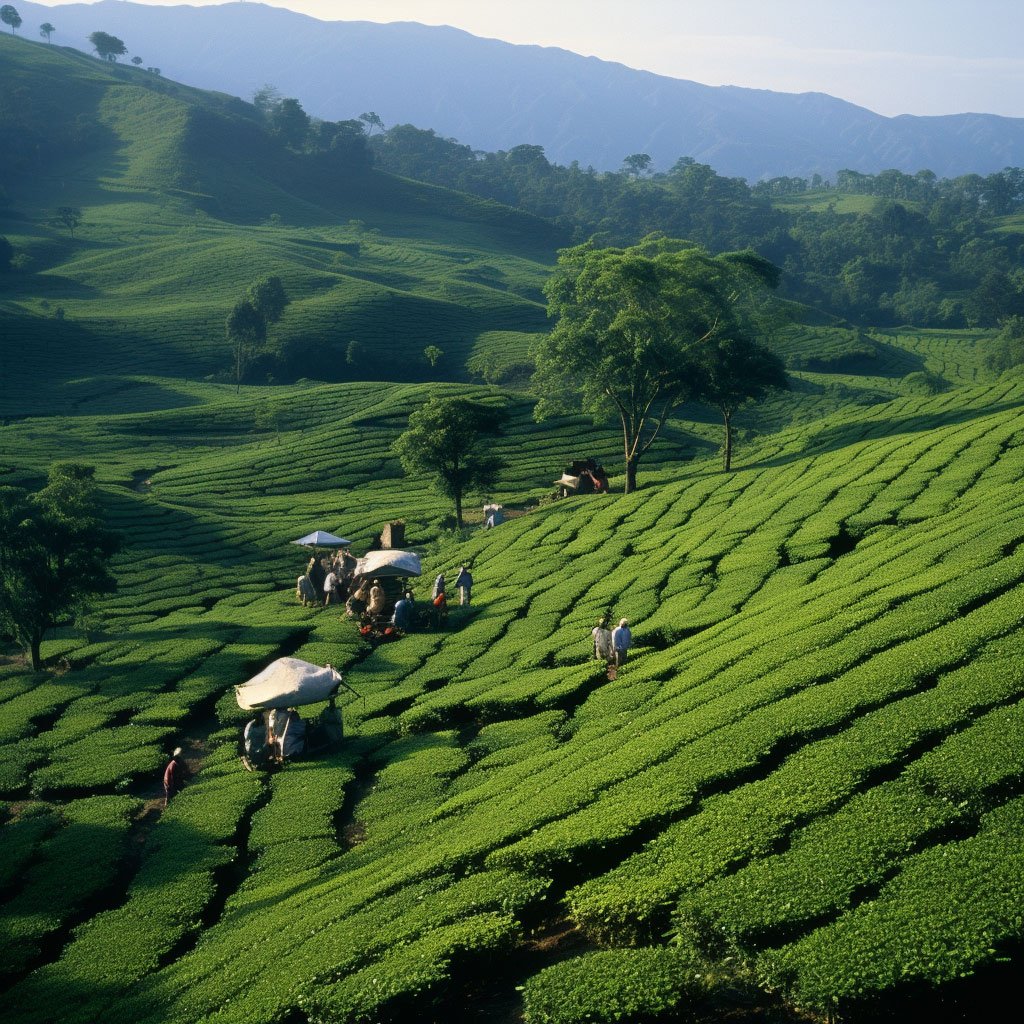In the bustling streets of Pakistan, amidst the cacophony of vendors, the colorful bazaars, and the melange of tantalizing aromas, one scent stands out distinctly, enticing the senses and warming the heart – the aroma of freshly brewed chai.

Chai, the local term for tea, is more than just a beverage in Pakistan; it is a symbol of hospitality, a catalyst for social interaction, and a daily comfort for many. It is an integral part of the nation’s cultural fabric, woven into their day from dawn till dusk, transcending social and economic barriers. Whether it’s a roadside vendor serving laborers or an elaborate tea ceremony in an affluent home, chai is ever-present, a testament to its cultural importance.
Chai Dhabas: The Cornerstone of Pakistani Tea Culture
In Pakistan, tea is not merely sipped in the isolation of one’s home; it is a communal experience often enjoyed at chai dhabas, or tea stalls. These ubiquitous establishments, found in every corner of every city and town, serve as social hubs where people from all walks of life gather to discuss everything from politics to cricket, all over steaming cups of chai.

Here, you can witness the unique tea-brewing methods that infuse each cup with its characteristic flavor. The robust Assam or Kenyan black tea leaves are boiled with water, followed by a generous addition of milk and sugar. The result is a strong, sweet, and creamy concoction that is as delightful in taste as it is in aroma.
Kashmiri Chai: A Unique Twist to the Traditional Brew
As we traverse the diverse landscapes of Pakistan, we encounter regional variations in tea that reflect the unique flavors and traditions of their locales. One such variant is the Kashmiri chai, a special tea from the northern regions of Pakistan.

Kashmiri chai, or noon chai, is a visually striking and deliciously unique brew. It’s characterized by its beautiful pink color, a result of its unique preparation method that involves the baking soda. The tea is typically made with a special tea leaf known as ‘Kahwah,’ and is brewed with milk, cardamom, almonds, pistachios, and often, a pinch of salt. This salty and nutty tea stands in stark contrast to the sweet, creamy chai commonly found in the rest of the country, but is just as loved.
Masala Chai: A Spicy Treat
From the gentle serenity of Kashmir, we move further south, where the tea adopts a distinct personality, presenting us with the Masala Chai. This variant is a spicier and more robust version of the traditional chai, infused with a variety of spices such as ginger, cardamom, cinnamon, and cloves.

These spices, collectively known as ‘masala’, are crushed and boiled together with the tea, releasing their flavors into the brew. The resulting beverage is a delightfully fragrant and flavorful concoction that not only warms the body but also stimulates the senses. It is particularly cherished during the monsoon and winter seasons.
Sulaimani Chai: A Blend from the Coast
Our journey through the diverse tea landscape of Pakistan wouldn’t be complete without a taste of the Sulaimani chai. This tea variant hails from the coastal regions, particularly from the city of Karachi.

Sulaimani chai is unique, brewed without milk and infused with lemon, mint, or sometimes even a hint of saffron. Its lighter taste and the refreshing addition of citrus make it an ideal beverage for the hot and humid climate of the coastal regions.
Chai: A Symbol of Hospitality and Connection
Beyond the vast variety of teas, the act of drinking chai is steeped in symbolism and tradition. Serving chai to guests is considered a sign of warm hospitality in Pakistani culture. It is not uncommon for negotiations, whether business or personal, to be conducted over cups of chai, highlighting its role as a social lubricant.

Chai is also deeply intertwined with the country’s art and literary scenes. Tea stalls often serve as hubs for poetry recitations, philosophical discussions, and music performances, enriching the cultural fabric of the society.
Tea Production: A Driving Economic Force
While Pakistan’s love affair with tea is evident in its consumption, it’s also worth noting the country’s role in tea production. Even though Pakistan imports a significant portion of its tea due to its climate not being traditionally suitable for large-scale tea cultivation, the country has been gradually increasing its own tea production.
Tea plantations can be found in the regions of Mansehra and Battagram in Khyber Pakhtunkhwa, and efforts are ongoing to introduce tea cultivation in other parts of the country as well. The tea industry in Pakistan not only fuels the country’s economy but also provides employment opportunities to the local population, tying the beverage even more closely with the country’s identity.
Tea Education: An Emerging Trend
With a growing global interest in tea and its origins, tea tourism and education are emerging trends in Pakistan. Tourists and locals alike can now visit tea plantations and factories to learn about the complex process of tea production, from plucking the leaves to the final stages of processing and packaging. These visits often culminate in a tea tasting session, allowing visitors to appreciate the subtleties of flavor in the tea they consume daily.

Conclusion: A Toast to Pakistani Chai
As our exploration of Pakistani tea culture draws to a close, it becomes clear that chai is not just a beverage – it’s an experience, a sentiment, a symbol of unity, and a testament to Pakistan’s rich cultural diversity.
From the nutty and pink-hued Kashmiri chai to the spicy Masala chai, from the aromatic dhabas to the tranquil tea gardens, each cup tells a story, embodying a tradition that has been passed down generations.
So the next time you find yourself sipping a cup of Pakistani chai, take a moment to appreciate the journey it has taken to reach your cup and the cultural tapestry it represents. And as the locals would say, “Chai cheers!”
